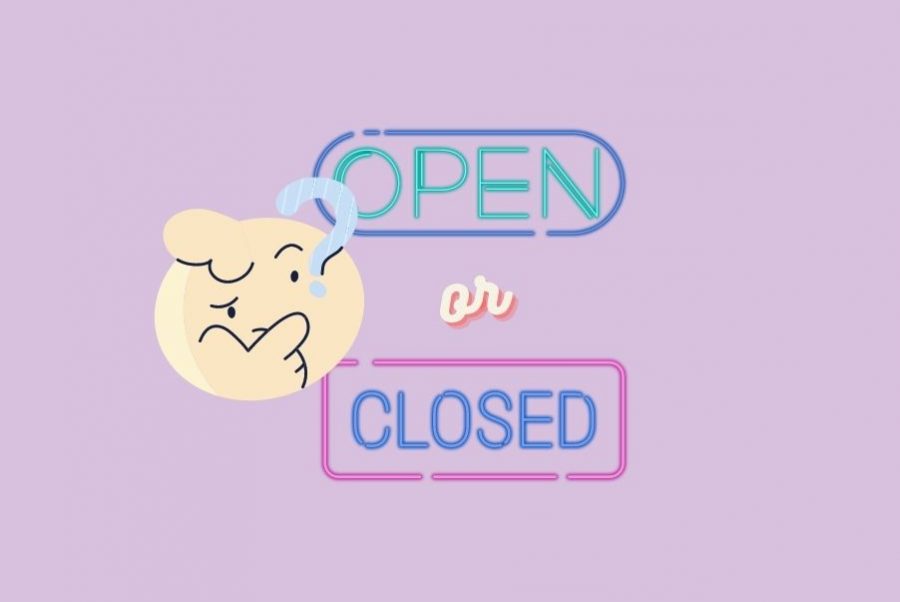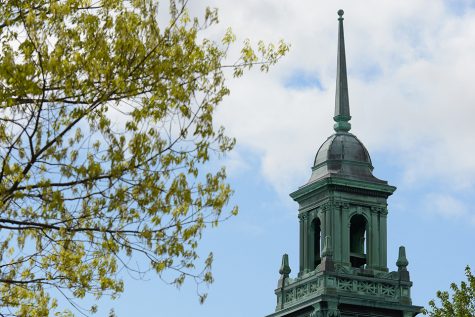Should Simmons reopen in person for the fall? A case for both sides
March 20, 2021
Amanda Perry is a senior at Simmons University and contributing writer for the Voice.
Nearly 376 days ago, Simmons University alerted students and faculty that they would be moving to a remote learning environment—due to the Nation’s rise in Covid-19 cases. Simmons was applauded by many for their swift response to the pandemic and their efforts to keep both students and faculty safe. However, as many other academic institutions have begun to reopen, Simmons has remained almost completely reliant on their new virtual platform.
While the pandemic is still a concern, the development of new vaccines and the 78.9% decrease in cases—since the peak of the pandemic—have led many other colleges towards reopening. It is my opinion that Simmons should join the throng and make the effort to reopen their academic campus for the Fall 2021 semester. It has gotten to the point where inaction is no longer a viable option, as many students, alumni, professors, and prospective students begin to question the value of a virtual Simmons’ degree. By no means can we go back to business as usual. However, the University should be able to open with minimal risk if the institution adherences to CDC guidelines, imposes new campus restrictions, and continues to monitor the overall health of the Simmons’ community.
Some may argue that other nearby institutions, like UMass Amherst, have reopened only to be forced back into lockdown. An institution’s safety relies heavily on the cooperation of the student body and members of UMass’s 22,000 undergraduate population were not adhering to Covid protocols. It is less likely that these major types of outbreaks would occur in an environment like Simmons. The University has a much smaller student population, does not sponsor any Greek Life—a large source for Covid cases among colleges—and has always prided themselves on teaching their students leadership skills and community oriented thinking. Simply put, it is much less likely for Simmons’ 2,000 undergraduate students to participate in risky behaviors.
There will be a danger towards students’ mental and physical wellbeing if they are forced to continue with virtual learning. Simmons has made efforts to increase online access to important counseling services and granted special permission to students with extenuating circumstances to live on campus. However, the isolation of virtual school has led to a significant rise in rates of depression and anxiety amongst college-age-students. A recent study from Boston University and the American College Health Association found that college students are not only more depressed, but that “a higher proportion of students report[ed] that their mental health has negatively impact[ed] their academic performance.” With shortened class periods and increased loads of asynchronous work, many students feel as though they are being left to teach themselves. This has resulted in both current and potential students taking time off from school or seeking their education elsewhere.
The world is beginning to open up and Simmons needs to be a part of it if they hope to maintain their status as a successful and revered academic institution. Something is better than nothing. Opening in Fall 2021, even with the strictest of health guidelines, will tremendously help the Simmons community and allow everyone to begin moving forward from this pandemic.
Madison Horn is a senior at Simmons University and contributing writer for the Voice.
In the spring of 2020, Simmons students had to leave campus due to COVID. From there, the fall semester of 2021 was entirely remote. A year later in the spring of 2021, Simmons is open at half capacity. But what will next fall look like? One thing is certain. Simmons should not open to full capacity.
There is one timeline after another that is coming out about when we can expect life to return to ‘normal’. Recently, The Atlantic reported that we should expect an uncertain spring, an amazing summer, a cautious fall and winter, and that we should be out of the woods come next spring. Note the word ‘caution’ is used to describe how fall and winter will be.
Simmons would be throwing all caution to the wind if the institution plans to open to full capacity this coming fall. Boston went into the red zone almost immediately once schools opened up this past fall. When the numbers began to surge, roughly half of those infected were under the age of 29 — a population made up of college students returning to Boston campuses. Universities across the country that reopened had to follow CDC and state guidelines. However, these rules do not mean anything if they are going to be broken, which has happened repeatedly all over the country.
Students have proven themselves to be super spreaders. Hannah Lu, from Stanford’s Energy Resources Engineering program, said “The number of students who had become infected just throughout the fall is more than twice of the national average since the beginning of the outbreak of 5.3%, with 17.3 million reported cases at a population of 328.2 million”. Simmons is in a major city and prides itself on being in the biggest college town in the U.S..
Directly across Simmons is Emmanuel, a college campus students are known for cutting through. Yes, you have to be close enough to someone for long enough to catch COVID. But when these students have to wait for cars to pass, clustered together, for minutes at a time until traffic clears… this waiting game to jaywalk is ever more dangerous now with COVID.
Additionally, we know that the virus is mutating to spread even faster. While this new strain has not hit the U.S. yet, who is to say what could happen this fall when international students return from outside the country and need to hop on a plane in order to do so.
It is also clear that the return to normalcy will take time. In fact, perhaps even longer than the timeline provided by The Atlantic. Nicholas Christakis is a physician and sterling professor of social and natural science at Yale University. He says the coronavirus pandemic will continue to affect our lives through 2021 and beyond. Then at the end of 2023 and the beginning of 2024, we enter the “post-pandemic period”. And who is to say if “normal” will look like life before a global pandemic took over the world last year?
The virus has gotten in the way of the college experience. But Simmons opening to full capacity still won’t solve this. Lectures will be remote, students won’t be able to congregate, not to mention that socially distancing at Simmons seems impossible when the dorms could not fit everyone under normal circumstances. Students will not be getting the college experience back. Their return to Simmons will only be an act of civil disobedience during a time when the complete opposite is necessary.


















